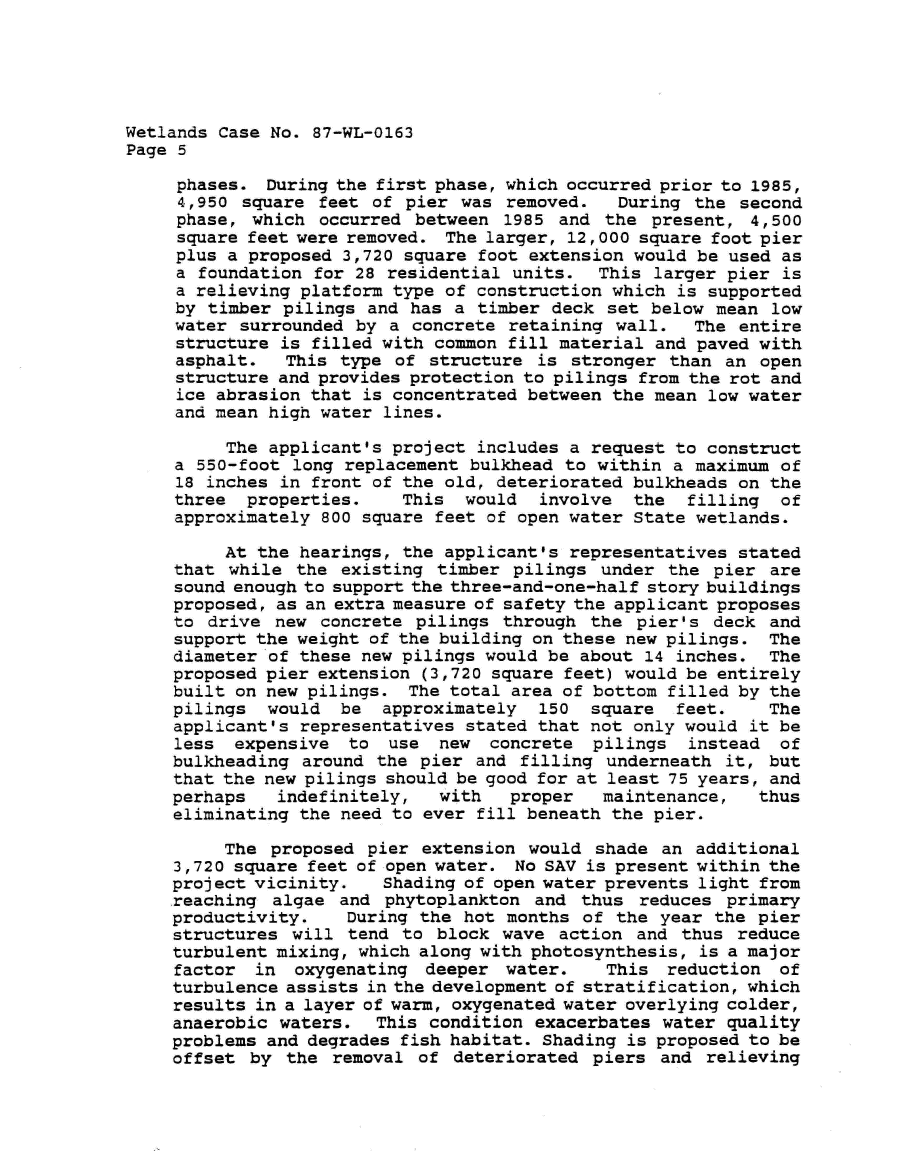|
Wetlands Case No. 87-WL-0163
Page 5
phases. During the first phase, which occurred prior to 1985,
4,950 square feet of pier was removed. During the second
phase, which occurred between 1985 and the present, 4,500
square feet were removed. The larger, 12,000 square foot pier
plus a proposed 3,720 square foot extension would be used as
a foundation for 28 residential units. This larger pier is
a relieving platform type of construction which is supported
by timber pilings and has a timber deck set below mean low
water surrounded by a concrete retaining wall. The entire
structure is filled with common fill material and paved with
asphalt. This type of structure is stronger than an open
structure and provides protection to pilings from the rot and
ice abrasion that is concentrated between the mean low water
and mean high water lines.
The applicant's project includes a request to construct
a 550-foot long replacement bulkhead to within a maximum of
18 inches in front of the old, deteriorated bulkheads on the
three properties. This would involve the filling of
approximately 800 square feet of open water State wetlands.
At the hearings, the applicant's representatives stated
that while the existing timber pilings under the pier are
sound enough to support the three-and-one-half story buildings
proposed, as an extra measure of safety the applicant proposes
to drive new concrete pilings through the pier's deck and
support the weight of the building on these new pilings. The
diameter of these new pilings would be about 14 inches. The
proposed pier extension (3,720 square feet) would be entirely
built on new pilings. The total area of bottom filled by the
pilings would be approximately 150 square feet. The
applicant's representatives stated that not only would it be
less expensive to use new concrete pilings instead of
bulkheading around the pier and filling underneath it, but
that the new pilings should be good for at least 75 years, and
perhaps indefinitely, with proper maintenance, thus
eliminating the need to ever fill beneath the pier.
The proposed pier extension would shade an additional
3,720 square feet of open water. No SAV is present within the
project vicinity. Shading of open water prevents light from
reaching algae and phytoplankton and thus reduces primary
productivity. During the hot months of the year the pier
structures will tend to block wave action and thus reduce
turbulent mixing, which along with photosynthesis, is a major
factor in oxygenating deeper water. This reduction of
turbulence assists in the development of stratification, which
results in a layer of warm, oxygenated water overlying colder,
anaerobic waters. This condition exacerbates water quality
problems and degrades fish habitat. Shading is proposed to be
offset by the removal of deteriorated piers and relieving
|

